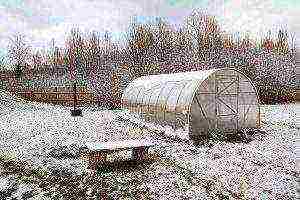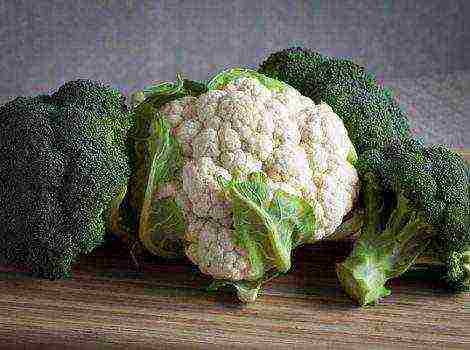Content
- 1 Tobacco varieties
- 2 Planting seeds
- 3 Transplanting
- 4 Care
- 5 The soil
- 6 Drying
- 7 Fermentation
- 8 The choice of the variety.
- 9 Planting tobacco seeds for seedlings.
- 10 Tobacco seedling care.
- 11 Planting tobacco in open ground.
- 12 Watering tobacco in the open field.
- 13 Top dressing of tobacco in the open field.
- 14 Tobacco picking and punching.
- 15 Harvesting tobacco.

In the climatic zone of central Russia, tobacco planting occurs approximately
in the beginning of March. When sowing late, the harvest will be smaller and of lower quality.
An adult tobacco bush is a resistant, powerful plant that develops up to the October frosts.
The tobacco seed itself is quite small, suitable for shallow sowing.
My very last article on how to grow tobacco, all the information there is structured better :) Go on, do not hesitate 🙂
Plastic containers are very suitable for raising seedlings, for example, packaging for cakes. In the absence of such, containers with seedlings can be covered with polyethylene, tied in a bag.
The seedling soil should be moderately moist and loosened. At the same time, care must be taken not to overdo it with moisture, otherwise the seeds may simply suffocate.
Seeds germinate well at temperatures ranging from twenty-three to twenty-eight degrees. In a lower temperature environment, the growth of tobacco slows down, and at ten to fifteen degrees of heat, the seeds can completely rot.
Also, for tobacco seeds, constant access to light is mandatory.
The seedling container should be covered with earth, leaving up to ten millimeters for the edges. After that, the earth must be leveled and compacted with your fingers. Tobacco seeds are poured onto the prepared soil, crushed and irrigated from a spray bottle. The container with seeds is covered with a lid, wrapped in polyethylene and placed in a well-lit warm place. During the ripening of the seeds, the cover will need to be removed several times so that the sprouting sprouts are aired.
The first shoots will need to provide the maximum amount of light. When growing seedlings in the spring, support the growth of seedlings with a fluorescent lamp for up to several days.
Watering must be done carefully, supplying water through an enema or a bottle with a straw.
When the first shoots appear on the surface, do not rush to remove the lid, let the still weak shoots stay warm for a while. This will not only help them become stronger, but also save them from dry house air.
The stable temperature, which must be maintained until the leaves appear, vary from twenty-three to twenty-five degrees.
In the “cross” phase, the tobacco is ready to be transplanted into separate cups. When replanting our seedlings, raise them together with a lump of earth, so as not to damage the still weak roots.
Transplanting tobacco into the ground can be done when the risk of frost has disappeared and the air temperature is fixed at around +10. The end of May will be the ideal season for disembarkation. But if you plan to cover the garden, then you can plant seedlings earlier.
The distance between tobacco bushes should not be less than thirty centimeters. Remember that the soil in which you plan to plant the tobacco must be moist, soft, loose and rich in lime. Also, tobacco consumes a lot of potassium, so do not risk planting it near potatoes or beets. (well, or after them).
Ash and manure can be used as fertilizer for tobacco crops.However, with an excess of fertilizers, tobacco can lose its aroma and pleasant aftertaste.
You should also be careful with watering, tobacco loves to drive, but cannot stand its stagnation. Also, tobacco should be planted either in the sun or in partial shade. But it should be taken into account that, growing in partial shade, the tobacco leaf becomes somewhat thinner.
Harvesting tobacco leaves starts from the bottom tier. By the way, the leaves ripen for the first harvest in about forty days (plus or minus a week).
A tobacco leaf can be considered ripe when the leaf turns yellowish-green, the central vein turns white, the leaf blade sags, and the leaf surface becomes sticky and smooth. When breaking off a leaf of tobacco, you should hear a click, characteristic of the plant. It is better to collect the leaves in the evening, when, tired of the day's gifts, they contain little water, but a lot of carbohydrates.
In order to increase the quality of the tobacco leaf, the plant can be popped. The leaves of such a tobacco bush will grow much better and thicker. The minus of verskovaniya is that lateral processes begin to grow on the plants, which must be removed in time.
After harvesting, the processes of drying, fermentation and manufacturing of the tobacco product begin.
Features of growing tobacco.
The cultivation of tobacco for the southern regions of Russia is a common thing and, to some extent, beloved. Such varieties as Yubileiny, Trapezond and Holstrolist give good yields.
The makhorka is also in demand. M. Pehlnts 4, Pekhlets local, Datura local and AS 18/7.
By the way, makhorka is a very unpretentious culture, with one hundredth of a hectare bringing up to forty kilograms of dry product.
How it all starts.
It all started with a great bang! That is, from planting seedlings 🙂
Sowing seeds and growing seedlings takes up to one hundred and thirty-five days in total. Mahorka requires much less time for its development, up to one and a half months.
Before you start growing tobacco, you must first tackle the seedlings by planting tobacco seeds in a box or flower pots, watering them in time and exposing them to the gentle rays of the sun.
Before sowing, the seeds should be soaked in water or 1% nitric acid potassium solution. You can also soak the seeds in tartaric acid.
Pre-soaking stimulates seed germination and increases the number of sprouts by about twenty percent.
Twenty-four hours later, remove the seeds from the solution, rinse and cover with a layer of a few centimeters in a be sure to dry enamel bowl.
Now the seeds are almost ready for planting, it remains to cover them with damp gauze (or any other cloth) and leave to germinate. Remember to stir the seeds and moisten them.
Also, in preparation for planting the seed, you need to take care of the greenhouse and the preparation of a nutrient mixture consisting of sand, humus and earth. Having finished arranging the landing site, you can go directly to the process itself. By the way, the ideal period for planting seeds is considered to be the period from April 20th to May 25th.
The sowing density of germinated tobacco seeds is seventy pieces by thirty centimeters, makhorka - seventy pieces by twenty centimeters.
You need to dig holes along the land furrow drawn in the pallet, at a distance of at least thirty centimeters from each other, again, for a shag, the distance will be twenty centimeters
Pour 500 ml of water into the hole and insert the seedlings, sprinkling the roots with earth. In order to facilitate the adaptation of the roots to the new environment, dip the roots of the plant in a liquefied "mullein", prepared in proportion to the clay.
During the development of the tobacco bush itself, carefully monitor the level of moisture in the soil, do not forget to loosen the ground and feed the plant in time.
When the tobacco blooms, the inflorescences will need to be broken off, and the tobacco should be pinched. Harvesting is done as the leaves ripen, that is, in tiers.Collecting usually begins from the lowest tier. The collected leaves are folded in the shade and left there for twelve hours, after which the tobacco leaves strung on a string are taken to drying rooms and brought to condition.
The final stage.
Kotovasiya with growing tobacco is over. The harvest has been received. The earth is resting. Now you can proceed to the direct preparation of smoking mixtures. To do this, we remove already dried tobacco leaves from the strings and fold them in four. To sing - we attach six cords to the “havanka” so as to ultimately get a kind of garland. We cling the "harbors" to the poles and leave them to dry out. In autumn, the leaves are removed, smoothed and packed in bundles. Voila, we enjoy the result of many labors
Tobacco is a multipurpose plant. In addition to smoking, it is also used for pest control in the summer cottage. Experts recommend growing smoking tobacco exclusively of those varieties that historically grow in your area. Only then, with proper processing, the tobacco for smoking will be strong, aromatic and with good taste.
In the middle zone of our country, smoking tobacco varieties should be planted on seedlings in late winter - early spring. If the seeds are sown later, the yield will be significantly lower.
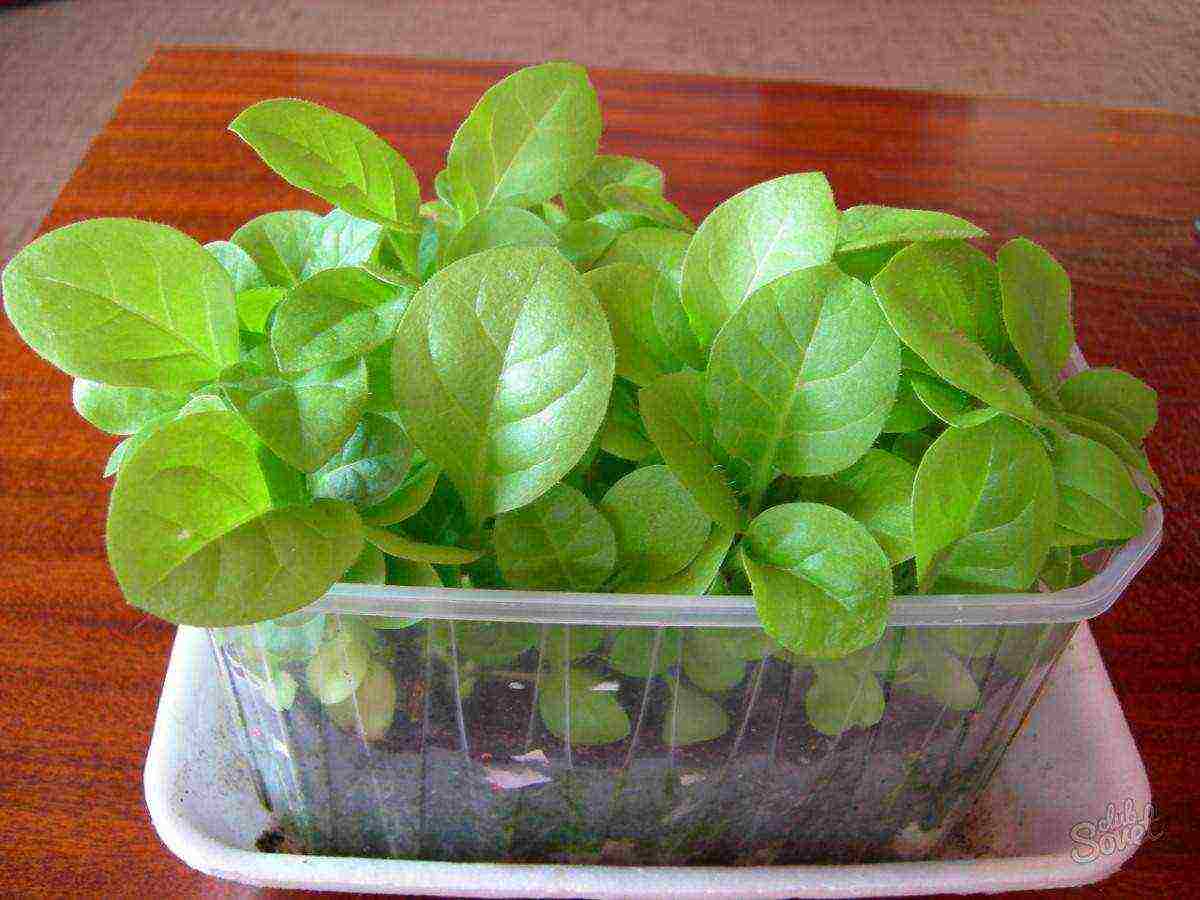
Since tobacco seeds are very small, they need to be sown superficially. For these purposes, plastic transparent boxes or cups are suitable. The soil for sowing must be loose and moist. However, it is important to ensure that the soil is not waterlogged and the seeds are not suffocated.

The seeds germinate in the best way at a temperature of + 23-28 degrees. If the temperature is lower, the sprouts will be delayed. And at 10-15 degrees, the tobacco seeds will completely rot. It is also important that the area with crops is sufficiently lit.
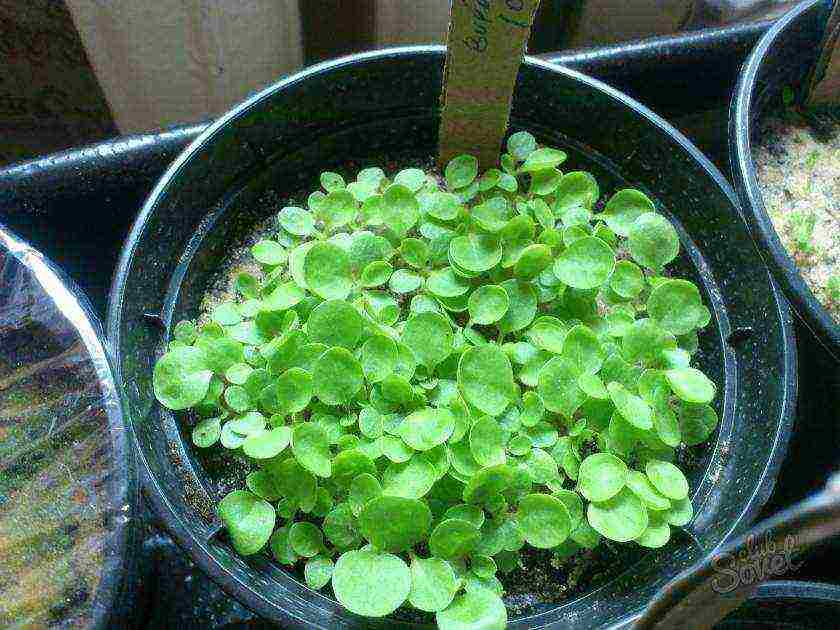
The seedling container must be filled with soil, the surface must be leveled and tamped a little. Sprinkle seeds on top, compact the surface with a finger, spray from a spray bottle. Cover the seedlings with a plastic transparent lid or plastic bag. A couple of times a day, the container is opened to allow the seeds and seedlings to "breathe".

As soon as the first shoots appear, they need to be given as much light as possible. However, do not rush to open them, let them grow stronger and stay in a protected, humid environment. If possible, you can hold the seedlings under a fluorescent lamp for a couple of days. Watering young tobacco sprouts should be done sparingly with a spray bottle or enema.
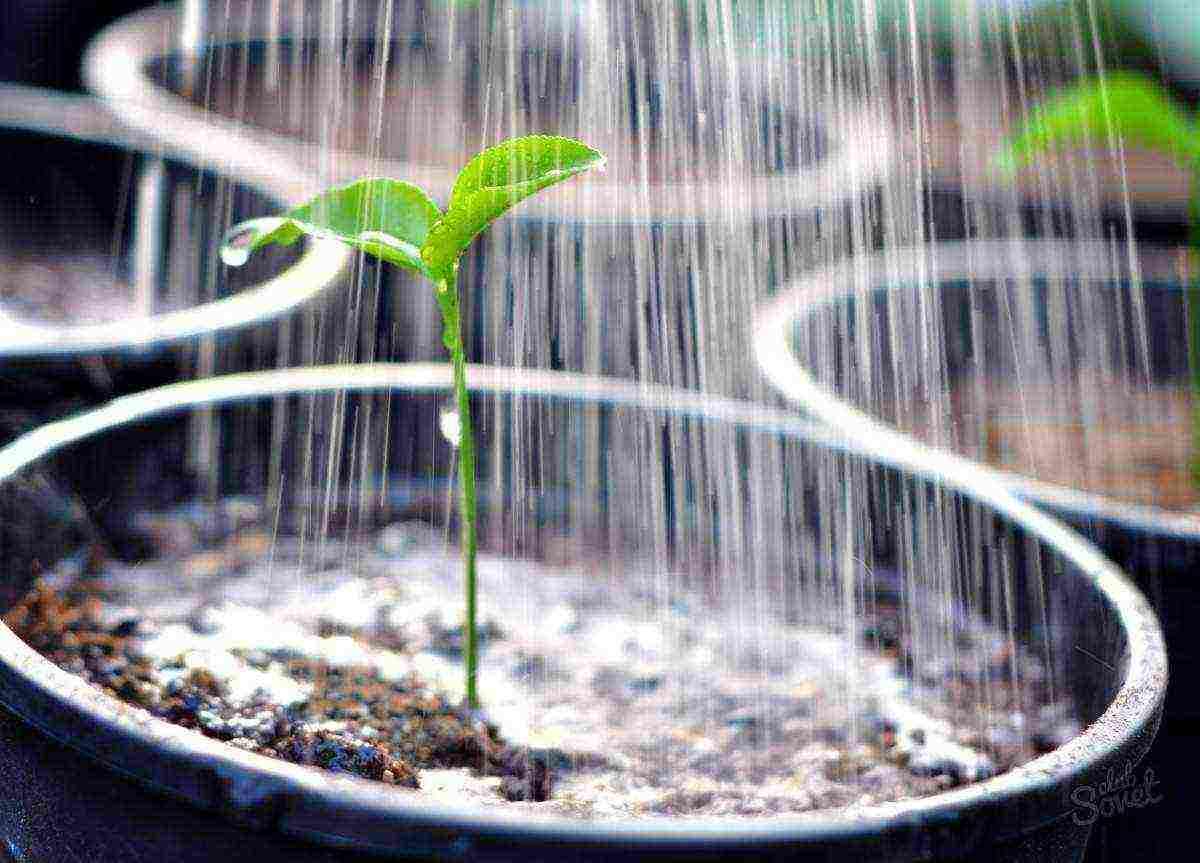
In the “cross” phase (the first two true leaves), the seedlings can already be thinned out and planted in separate containers. If it is not too crowded in a large container, then it is advisable to allow the sprouts to grow stronger and start planting them after the appearance of 4-5 leaves. When replanting seedlings, they must be removed along with a lump of soil. This will help minimize root damage.
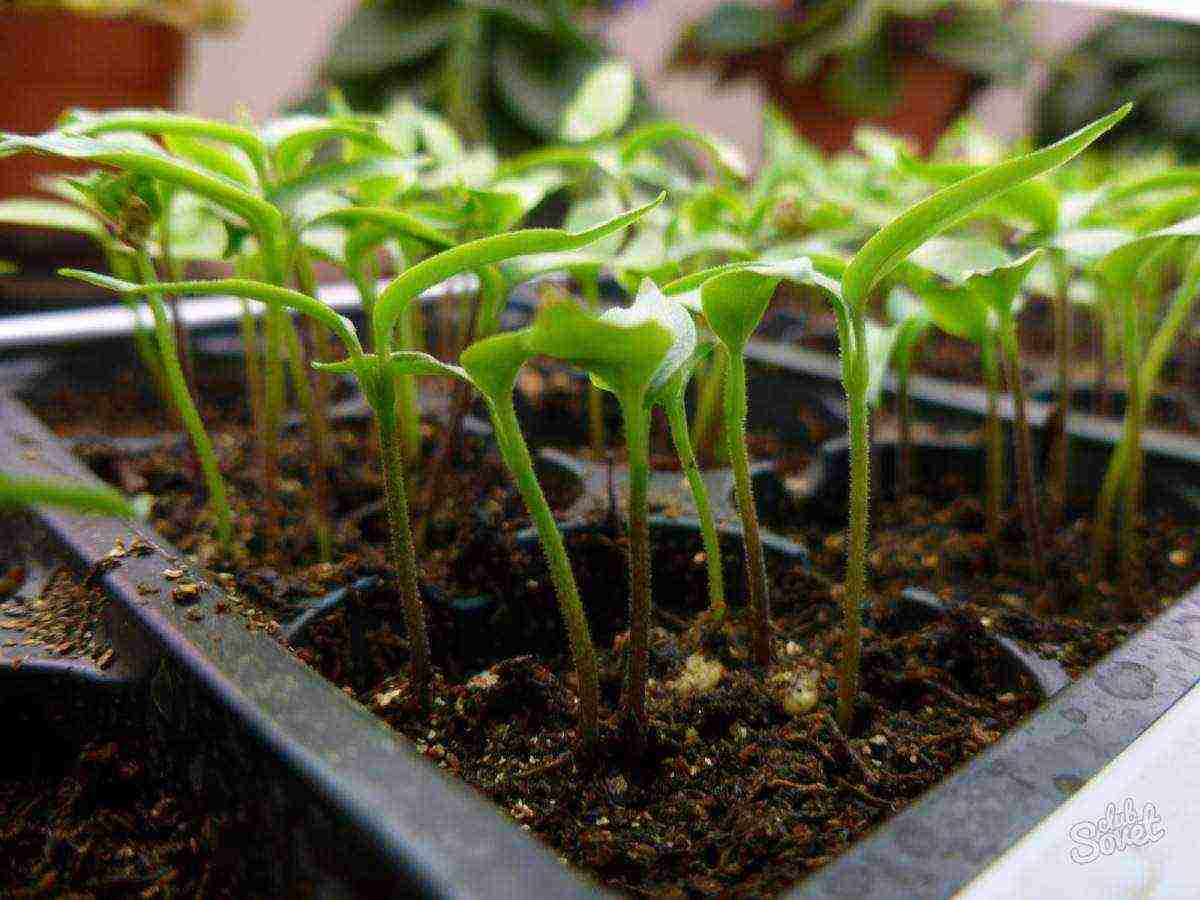
Tobacco seedlings can be planted in open ground only when all frosts have passed, and the surface temperature of the earth will be around 10 degrees Celsius. As a rule, this is the end of May. There should be a distance of 30 to 50 cm between the bushes. Tobacco "feels" best in light, loose soils that contain a moderate amount of lime.
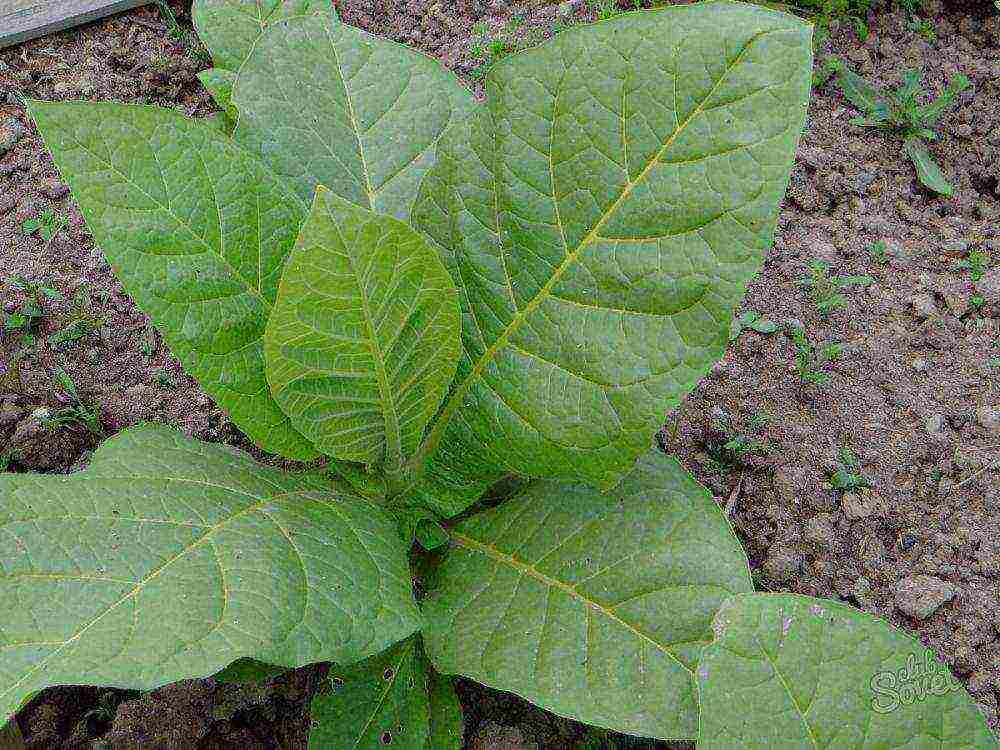
Tobacco needs a sufficient amount of potassium. That is why it cannot be grown in soil where potatoes and beets grew before it. The best fertilizer for smoking tobacco is manure and ash. True, you need to be careful with manure: with an excess of nitrogen, tobacco will actively grow, but have a weak aroma.
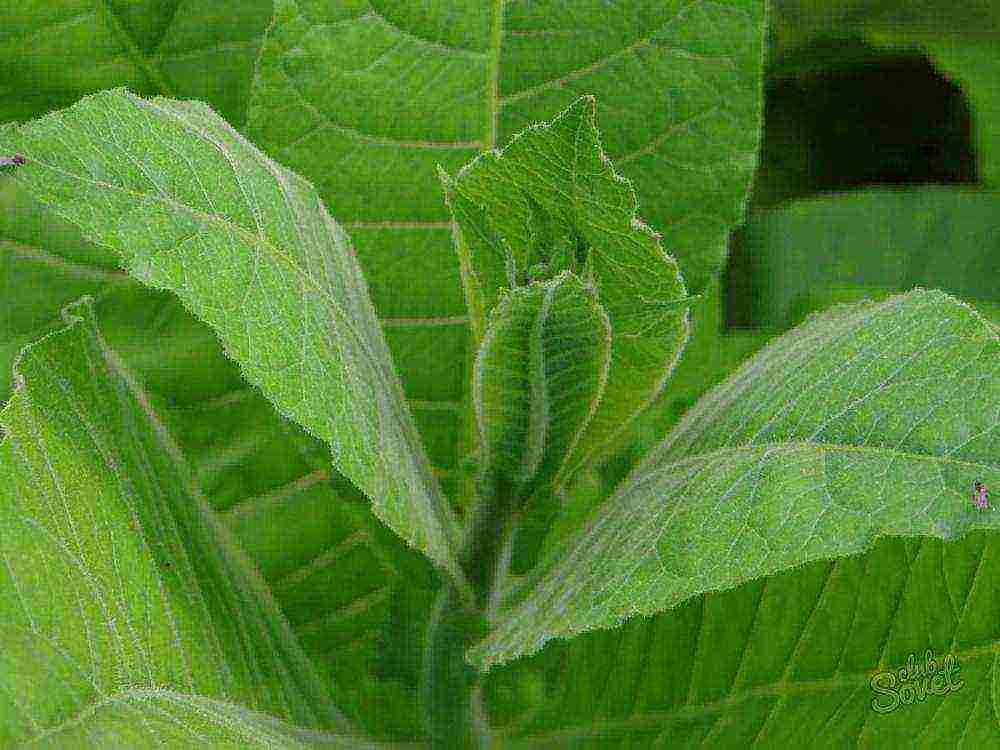
Tobacco loves water, but stagnant water should not be allowed. You should also provide the plant with sufficient sunlight.
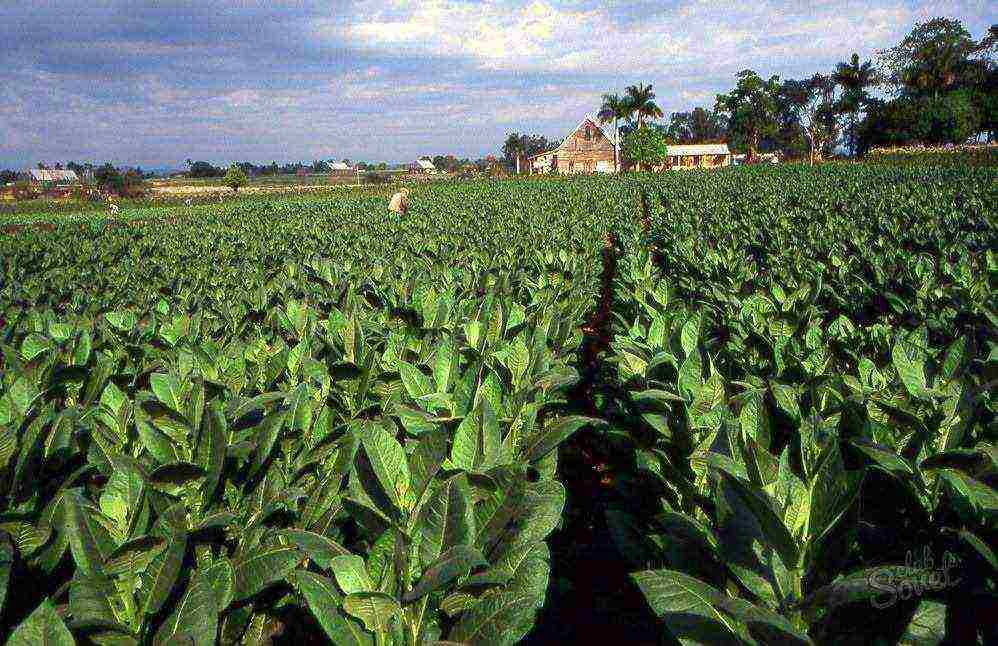
You need to cut off tobacco leaves periodically. Start cleaning from the bottom tier. The first "crop" is usually ready 40-45 days after planting in open ground.The “finished” leaf should have a yellow-green color, it is sticky to the touch, and the tuberosity disappears on it.
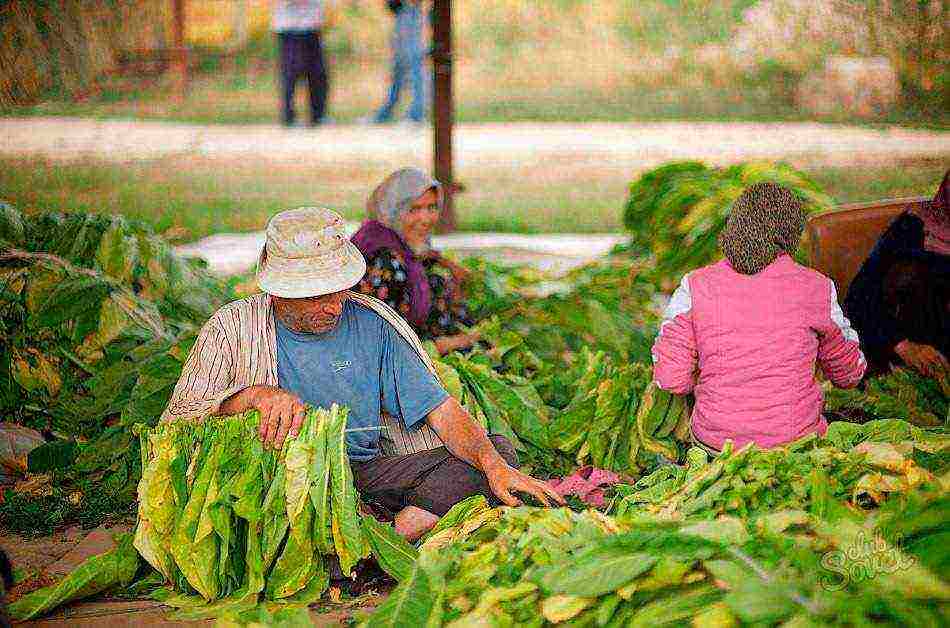
To improve the quality of tobacco, it needs to be "vershoked" - to break off the flowers when about half of the available inflorescences bloom. The best flowering tobacco bushes should be left to seed.

To obtain quality smoking tobacco, it must be properly dried and fermented. Only then can you achieve excellent taste and aroma.
Growing tobacco or makhorka is not difficult at all. We are often asked about this process, and, combining personal experience with advice from experienced people, including our readers, we decided to publish this material. I must say that the process of growing tobacco is not much different from growing, for example, tomatoes. But still, growing tobacco, you need to know certain features of this plant. This is what our publication is about.
Content:
- General information about the tobacco plant
- Should you grow tobacco?
- Features of growing tobacco
- Tobacco pests and diseases
- Tobacco drying and fermentation
General information about the tobacco plant
Tobacco (Nicotiana) is a genus of perennial and annual plants of the Solanaceae family. Grown to obtain raw materials used in tobacco products. In culture, the following types are most often found:
- Ordinary tobacco, or Virginia Tobacco, or Real Tobacco (Nicotiana tabacum). The plant is up to 3 m high with pink flowers, a tubular corolla with sharp lobes, leaves are oblong-lanceolate, sessile. Real tobacco is quite thermophilic, therefore it is especially productively grown in hot regions. In our country, ordinary tobacco is grown south of 55 ° north latitude (this is approximately the latitude of Ryazan, Smolensk, Ulyanovsk, Ufa, Chelyabinsk, Kurgan, Omsk, Novosibirsk and Kemerovo). Ordinary tobacco is cultivated in many countries of the world and has many varieties.
- Common shag, or Rustic tobacco (Nicotiana rustica) - a plant much lower than ordinary tobacco (up to 120 cm high), yellowish flowers, corolla with a short tube and rounded blades, ovoid leaves, narrow, obtuse at the end. The leaves of this more unpretentious plant contain half the amount of nicotine.
In the 19th century in Russia, makhorka was cultivated on an industrial scale everywhere (even in the Urals and Siberia). Even now, some villagers traditionally grow this plant from their own seeds.
Bolivia and Peru are considered the homeland of tobacco; it was brought to Europe by the expeditions of Christopher Columbus. Traditional areas of cultural cultivation - North America, China, India, Asia Minor. On the territory of the former USSR, ordinary tobacco is cultivated in the Transcaucasia, Uzbekistan, Kazakhstan, Moldova, Ukraine, Crimea and Krasnodar Territory. Tobacco is a thermophilic plant, the optimal summer temperature for it is about 30 ° C. Moist, light, free-flowing sandy soils are suitable for it. Tobacco is propagated by seeds, growing seedlings from them, which are then planted in the ground.
All parts of the plant contain nicotine (nicotine leaves most of all - 0.75-2.88%). Nicotine is a potent neurotoxin and cardiotoxin that causes short-term euphoria. The use of tobacco in various forms and in various ways (smoking, chewing, sniffing) causes physical and psychological dependence. Nicotine is extremely toxic. Some of the substances in tobacco are carcinogenic. therefore smoking tobacco is dangerous to health.
Should you grow tobacco?
Suppose you are a smoker, and you have the good fortune to live somewhere in the south of Russia or in Ukraine. You have at your disposal several acres of land. Why not try on the role of Philip Morris or at least Jack Vosmerkin, an American?
First, some fun arithmetic. One cigarette contains about a gram of tobacco. And the cheaper the cigarettes, the less it is there. That is, the pack contains about 20 grams.If a person smokes a pack a day, he will need about 6-8 kilograms of tobacco per year.
Under favorable conditions, about 30 g of smoking tobacco can be obtained from one plant, and six to seven plants can be placed on 1 square meter. The planting density of large-leaved varieties is 70 × 30 cm, and the planting density of medium-sized tobacco and makhorka is 70 × 20 cm.It turns out that you need to grow 270-300 plants, occupying about 40 square meters. m. plot. Moreover, if the tobacco turned out to be too "evil", it can be diluted with the stems.
Therefore, from the point of view of economy and finances, it is definitely profitable for a smoker to grow tobacco.
Features of growing tobacco
Further in the article we will talk about the cultivation of ordinary tobacco. If you decide to grow shag (Nicotiana rustica), then you will not need many of the tips given, shag is much easier to grow and less thermophilic. For the middle lane, it is sown in May in the ground under a film or covering material, and it has time to grow and give a crop.
So, the first thing to attend to is the seeds and their planting. Seeds are now sold on the Internet on many sites, you just need to choose a store convenient for you and a variety of tobacco.
Tobacco varieties
There are many varieties of ordinary tobacco. It is worth saying that for the period from 1990 to 2010. in the All-Russian Research Institute of Tobacco, more than 20 new productive and disease-resistant varieties of tobacco with excellent characteristics have been bred.
As with vegetables, it is better to choose local varieties for your site. Therefore, we list some popular varieties that are zoned for the territories of the former USSR:
- Refectory Kubanets. The growing season from planting seedlings to the last breaking is 103-134 days. Technically suitable leaves on average 27 pcs. Nicotine content 2.6%.
- Refectory 92. The variety is resistant to numerous damaging factors, viral tobacco diseases. It has a short growing season. On average, leaf breaking occurs 98 days after planting.
- Samsun 85. The variety belongs to intensively ripening varieties, mid-season - the number of days from planting to leaf breaking will be approximately 105-110 days. The number of technically ripe leaves from one tobacco bush is about 50 pcs.
- Anniversary new 142. The growing season from planting seedlings to ripening of leaves of average breaking is 78 days, to the last breaking 82 days. The nicotine content in the leaves is 2.0-2.1%. The variety has a complex resistance to tobacco diseases.
- Holly 316. Late-ripening form, intensive type of leaf maturation. Low in nicotine. From planting to maturation of the leaves of the last breaking 120 days.
Planting seeds
We recommend growing just a few bushes for the first year. So you will test your strength and find out all the nuances of the process. Therefore, you need very few seeds to get started. Tobacco seeds are as small as dust. There are about 12 thousand tobacco seeds in one gram, and about 4 thousand pieces of makhorka. To get the annual “rate” of a smoker, you need to sow only a quarter of a gram of tobacco seeds or three-quarters of a gram of tobacco seeds. You don't have to buy seeds anymore. Two or three bushes will give them more than needed for sowing a hectare.
Tobacco seeds remain viable for a long time, so sowing with old seeds is also possible, although it must be borne in mind that their germination decreases over time.
Tobacco can be planted on the seedlings on the windowsills, with or without a pick. The required age of seedlings is 40-45 days. But this technique is good only for small (up to a quarter of a hundred) volumes. However, for the first experiment, we don't need more. When growing tobacco in large volumes, it is either immediately planted in the ground (in warm climates), or greenhouses and nurseries are used.
Tobacco seeds are sown superficially, scattering them over wet soil.
An important point. The seeding depth of tobacco seeds is no more than 0.7-0.8 cm (0.3-0.5 cm for shag).After sowing, they are only slightly pressed into the ground and watered very carefully so that the seeds do not go deep.
You can sow not dry seeds, but hatched seeds. In this case, 4 days before sowing, the seeds are soaked in warm clean water and placed on a damp cloth. This will speed up the germination of the seeds and shorten the time to forcing the seedlings by a week.
The optimum temperature for germination of tobacco seeds is + 25ºC… + 28ºC. If the temperature is lower, then this can delay the emergence of plants, or even destroy them altogether.
It is impossible to overmoisten, as well as overdry the seedlings. It is best to water a little, almost daily.
Transplanting
Seedlings are planted when it reaches a height of 15 cm, has 5-6 developed true leaves and a well-developed root system. At this point, the danger of spring frosts should be avoided outside the window, and the soil at a depth of 10 cm should warm up above 10 ° C. This period is different in different regions, but approximately it is from the end of April to the end of May.
A week before planting, it is necessary to start hardening the seedlings, reducing watering and accustoming them to open air. 2-3 days before planting, watering the seedlings is completely stopped, watering abundantly only 2-3 hours before planting.
Plants are planted one at a time in the holes, after pouring 1 liter of water into them. In general, the process is very similar to planting tomato seedlings. And of course, every transplant is a shock for the plant. Therefore, it is advisable to preserve on the roots the soil in which the seedlings grew.
Care
During the growing period, it is necessary to regularly loosen the ground, remove weeds, feed and water. You can feed the plants based on the fertilization rates of tomatoes. Watering is usually limited to two to three waterings per summer, consuming 6-8 liters of water per plant. It is better to water the tobacco insufficiently than to water it.
A rooted tobacco bush can have roots up to several meters, and many tobacco growers find watering mature bushes harmful. However, it would be nice to water the tobacco a few days before harvesting.
In flowering plants, inflorescences are broken off (vershoking) and lateral shoots are regularly removed (pinching).
The soil
Tobacco is planted on fresh soil, in the absence of such, it is placed either after steam, or after winter crops or other plants that impose other nutrient requirements on the soil. For this reason, tobacco should not be planted, for example, after beets and potatoes.
The best soils for tobacco should be considered sandy loam, characterized by the presence of potassium and nitrogen, which are necessary for the tobacco plant.
Like all immigrants from the New World, tobacco is rapidly depleting the soil. But the remedy is known - fertilizers perfectly solve this problem.
The best fertilizer for tobacco is cow dung. Bird droppings and oilcakes are also considered useful fertilizers for tobacco. On soils poor in lime, liming is used, it has a beneficial effect not only on the culture, but also on the completeness of combustion of the tobacco plant.
Harvesting begins when the color of the tobacco leaves changes from green to yellow-green or light green. Since even one bush will have leaves of varying degrees of color, harvesting can take several weeks.
Tobacco pests and diseases
Tobacco is damaged by a number of pests, namely:
- Peach aphid, Greenhouse aphids, Tobacco aphids. Dangerous tobacco pest. A widespread species, it feeds on many cultivated and wild plants. Peach aphid inhabits all organs of the tobacco plant and sucks the juice out of them, which leads to a decrease in the yield and quality of raw materials.
- Blackleg... It is manifested by lodging and mass death of seedlings. The base of the stems becomes thinner and decays. A brown or white bloom appears on the affected surface. The pathogen remains in the soil.
- Powdery mildew. It is observed soon after planting seedlings in the ground. Separate spots with a cobweb-powdery bloom appear on the lower leaves; then the plaque becomes solid and covers the upper leaves.The mushroom hibernates on plant debris. The disease reduces photosynthesis, leads to plant oppression. Reduces the yield and quality of raw materials.
- Black root rot more often it affects seedlings, but adult plants also get sick. On the affected seedlings, the leaves wilt, turn yellow and dry out, the roots turn brown or black and often die off. In adult plants, the leaves become attached, and black and white spots form at the ends of the roots.
- Common broomstick... Distributed throughout the south and southeast of Kazakhstan. The parasite settles on the roots of tobacco and develops at the expense of the host plant, forming a powerful branching stem of purple color. As a result of mass destruction of plants by broomrape, the yield of tobacco and the quality of raw materials are reduced. Broomrape propagates by seeds that remain in the soil for many years.
- Mosaic... The leaves of diseased plants have normal green patches that alternate with light green. Later, the tissue dies off in spots. The main source of plant infection is post-harvest residues of diseased plants, both in greenhouses and in the field.
- Bacterial hazel grouse. Oily or weeping spots appear on the tips of the leaves of young seedlings or along the edges of the leaves. In wet weather, they rot, and the whole plant becomes infected from them. Round chlorotic spots appear on the leaves of grown plants, which merge, forming patches of dead tissue. The causative agent of the disease is stored in tobacco leaves, in tobacco dust, in inventory.
Tobacco drying and fermentation
Well, the most important part of getting smoking tobacco is drying and fermentation. Let's make a reservation right away: if you do not smoke, have no previous experience with tobacco, it will be quite difficult for you to determine the degree of readiness. You can either not dry it out, or rot. However, let me remind you that our grandfathers grew and dried makhorka without a higher education.
Drying
After collecting, the tobacco leaves are hung to dry in a ventilated room, while it is advisable to place containers with water there to increase the humidity. The leaves dry out in about a month.
Then the dried leaves must be moistened with clean water from a spray bottle and folded into piles, covered with polyethylene, and kept for up to a day for uniform moistening. The leaves should feel soft, but not soggy. After that, the leaves, either whole or cut, are hidden in sealed glass containers (jars) for fermentation.
Fermentation
Fermentation is a biochemical process that takes place at a constant temperature of 50 ° C for several weeks. Tobacco is fermented to reduce the strength, change the taste for the better, and reduce nicotine and tar. This can be done, for example, in electric ovens at a temperature of + 50ºC… + 60 ºC. Sometimes it is more convenient to dry cut leaves rather than whole leaves.
The resulting tobacco can be smoked in pipes, wrapped in cigarettes, fortunately, wrapping machines and tissue paper are now sold in many places. Finally, you can try making a cigar - it's easy and fun.
Of course, our material does not claim to be a detailed textbook, and many subtleties remained unaffected. And if you are serious about growing tobacco, you will need to study this issue more. But in order to get the first harvest, you already know enough.
We'd love to read your tips and secrets for growing, drying and fermenting tobacco.
And in conclusion, we remind you once again: smoking is addictive and harmful to your health. If you don't smoke, don't start. If you smoke, maybe it's time to quit? Nerd against smoking!
The content of the article:
- The benefits of growing tobacco at home.
- How to start growing tobacco in the garden?
- Video.
Unfortunately, there is a huge percentage of people who smoke in Russia.People cannot give up their bad addiction in any way, which harms not only the person who smokes, but also his environment. According to VTsIOM, about 1/3 of all Russians smoke. 75% of men and 21% of women smoke regularly. These are terrifying statistics. The worst thing is that the percentage of women who smoke has increased in recent years.
We urge you to quit smoking. This is a habit that is killing you from the inside out.
This article is dedicated to people who smoke who cannot quit smoking in any way. Who have already tried to quit many times and have tried all the methods. There is a great solution for you - growing tobacco at home. This business is extremely exciting and interesting. Subject to all the rules of cultivation, the finished product is of very high quality. This is not comparable to what we buy in stores under the guise of tobacco and cigarettes.
Tobacco companies openly poison smokers by adding toxic chemicals to cigarettes to reduce the final cost of the product. At the same time, the price of tobacco products in stores is increasing every month.
For reference. The cost of 1 pack of cigarettes is from 1 to 5 rubles per pack.
A conclusion can be drawn from all this. Tobacco companies poison smokers for a lot of money, making just fabulous capital!
A bit of math. In 2016, the average price for a pack of cigarettes is 75-80 rubles. The average smoker smokes 10-20 cigarettes a day (0.5-1 packs). 80 * 365 = 29,200 rubles. That is, the average smoker spends on cigarettes per year 15-35 thousand rubles... But this money can be spent with considerable benefit.
The benefits of growing tobacco at home.
Growing and processing tobacco in the garden does not incur any costs (other than the initial cost of purchasing seeds). After you have received the first harvest, you no longer need to buy cigarettes in the store every day, spending a lot of money on it. You yourself will have a very huge amount of tobacco, which is not only enough for yourself, but you can also treat your friends.
But the most important thing is that the product will be natural, which means it will not be so harmful.
Growing tobacco is a hobby during which a person rests. There is something sacred in this. You will feel like a Cuban tobacco baron. In this article we will tell you everything about growing tobacco, you will learn the whole process - from A to Z. Everything will be accompanied by visual videos, it will be very easy to figure it out.
How to start growing tobacco in the garden?
How to start growing tobacco in your garden? This question is asked by many novice tobacco growers. Let's try to figure it out. It is necessary to decide on the variety, prepare containers for planting seedlings, prepare the soil for planting seedlings.
The choice of the variety.
First of all, you need to decide which variety or varieties to grow in your garden. There are a huge number of different varieties. For beginner tobacco growers, universal varieties, such as Virginia 202 or Herzegovina Flora, are best suited.
Virginia 202.
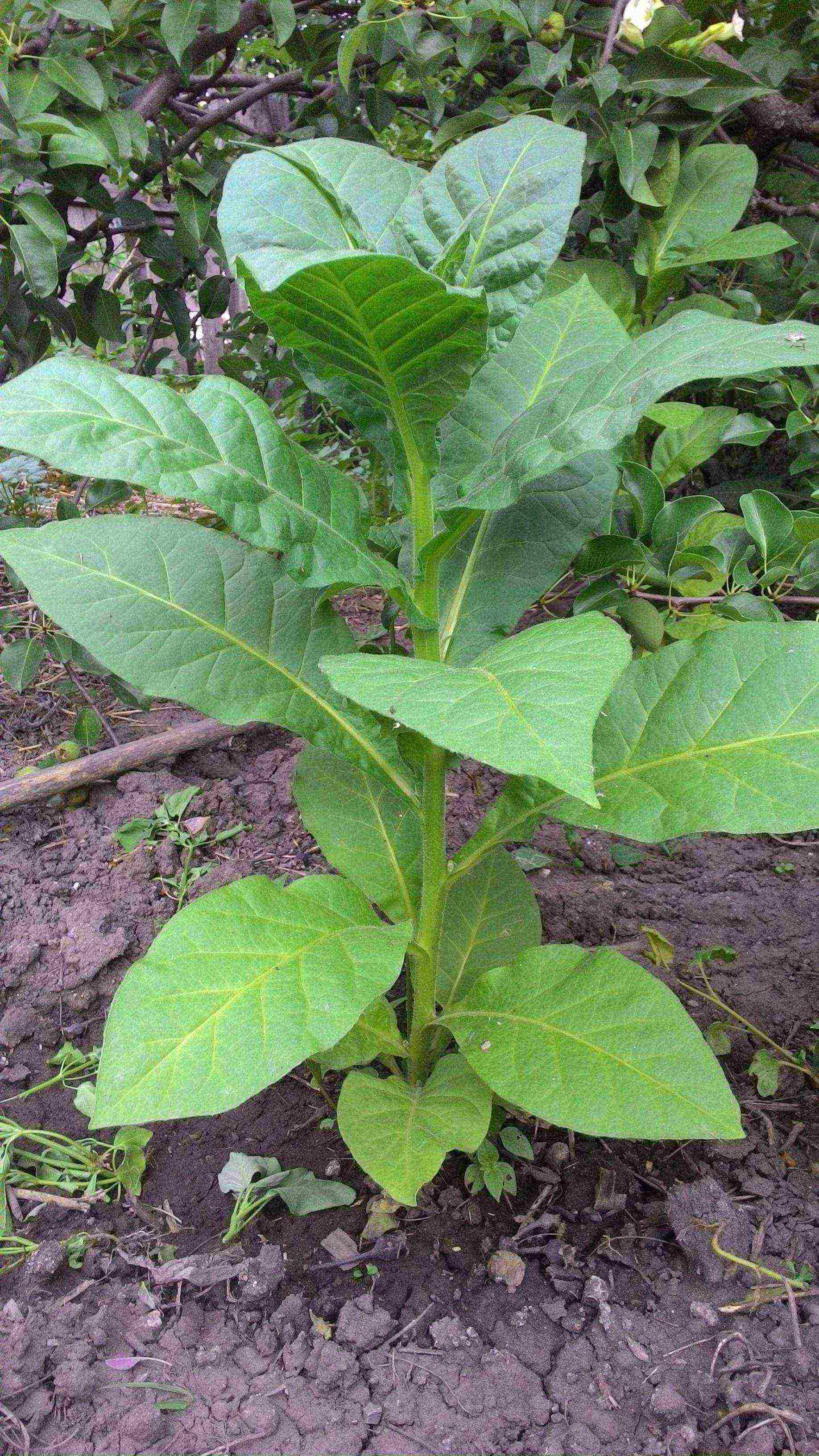 Tobacco Variety: Virginia 202
Tobacco Variety: Virginia 202
Description... Virginia 202 is a very common tobacco variety that grows well in Russia in various climatic zones. The advantage of this variety is the low content of various harmful resins. At the same time, it has a very pleasant sweetish taste. Virginia 202 tobacco is one of the most widespread varieties in the world and is cultivated everywhere. It was bred in Russia, in the Krasnodar Territory. Read more: Virginia Tobacco 202.
Tobacco Herzegovina Flora.
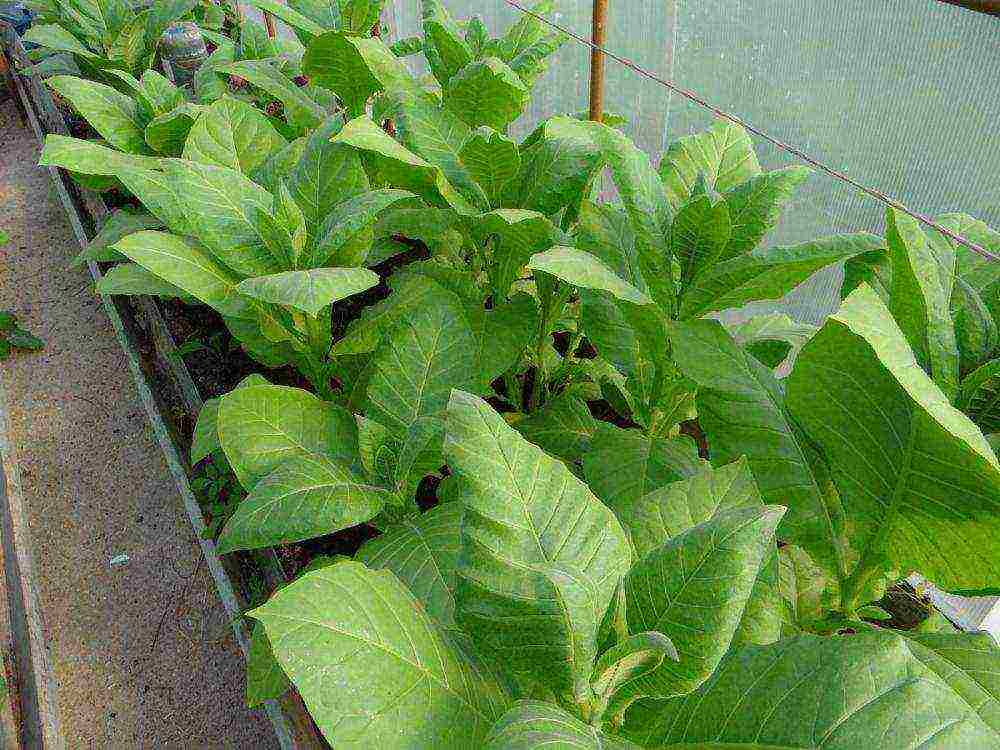 Photo: Tobacco Herzegovina Flor.
Photo: Tobacco Herzegovina Flor.
Herzegovina Flora tobacco is Stalin's favorite tobacco. Iosif Vissarionovich himself spoke about this while smoking his pipe. Herzegovina flora is a very common variety. Possesses very good taste and aroma qualities. The leaves are of moderate strength. Perfect for beginners.
Planting tobacco seeds for seedlings.
The homeland of tobacco is South America. The plant is thermophilic and ripens quite late. Therefore, on the territory of Russia, tobacco should be planted first on seedlings. The timing of planting seedlings is early spring. Seedlings can be planted throughout March.
Seeds should be planted in small containers. Disposable cups are very suitable for these purposes. A hole is made in the cups from the bottom to create drainage. Place a small layer of small pebbles or eggshells on the bottom.
After preparing the container, it is necessary to prepare the soil. Tobacco grows well only on fertile soil. It is advisable to buy a special universal soil for seedlings in the store. With this soil, you need to mix the usual disinfected soil from the garden in a ratio of 1 to 1. Add a little wood ash to the resulting mixture. The earth must be disinfected with a solution of potassium permanganate.
Will go directly to planting agricultural technology. There are several points here. Tobacco seeds are very small and inconvenient to work with. You need to be very careful. Before sowing, water the soil well with warm water in a glass. Then gently pour the seeds evenly out of the bag into the container. Sprinkle with earth on top with a layer of no more than 1 millimeter.
Cover the container tightly with polyethylene and place in a warm place. The tobacco grows within 3-5 days. As soon as the first bores begin to appear, the film must be removed and placed in a bright place, for example, on a windowsill.
Tobacco seedling care.
Let's talk about caring for tobacco seedlings at home.
Leaving before the pick.
Before picking, caring for tobacco seedlings is extremely simple. Immediately after the appearance of the first shoots, you need to remove the film and put the container with seedlings on a light windowsill, preferably on the south side. If this is not done, then the seedlings will be very elongated and will grow very poorly.
You constantly need to monitor the moisture content of the soil, as soon as it has dried out, it should be watered with settled water at room temperature. It is highly discouraged to water the plants with cold water.
Periodically, containers with seedlings need to be turned to the sun with the other side. This will ensure uniform growth and prevent stretching.
Picking tobacco into separate cups.
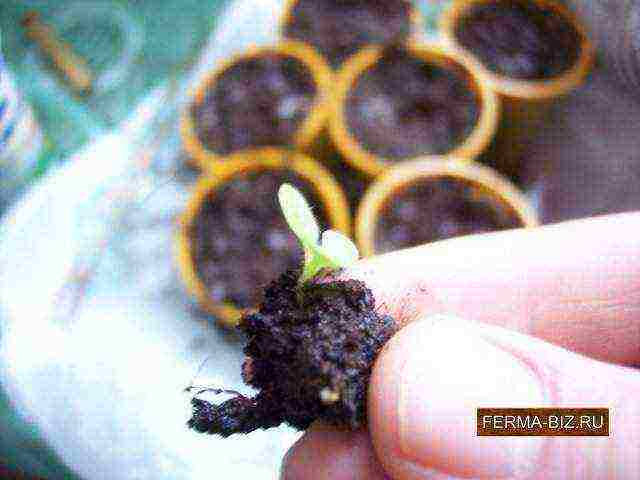 Tobacco pick
Tobacco pick
Tobacco pick Is the process of planting seedlings at a normal distance from each other.
It is recommended to dive tobacco when 2-3 permanent leaves begin to appear in plants. It is possible later, but then the growth of seedlings will slow down.
Growing tobacco without picking is simply impossible. The seeds are very small and the seedlings are very frequent. Tobacco grows quickly enough and the seedlings begin to interfere with each other's growth. As a result, the seedlings are very weak and elongated.
It is best to dive the tobacco into separate containers. For these purposes, it is best to use plastic disposable cups. For tobacco seedlings, they are spacious; in separate containers, the plants will grow better. It will then be convenient to plant seedlings from plastic cups in open ground. Read more in the article: Tobacco picking.
Leaving after a pick.
It is necessary to dive tobacco seedlings when 2-3 true leaves appear. By this time, the plants will grow tightly in one container. Plants dive into disposable cups, 1-2 pieces in one cup.
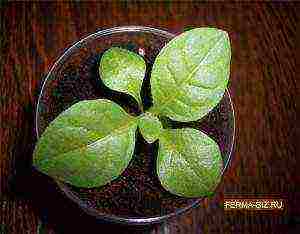 Photo
Photo
After picking, it is advisable to water the tobacco every day until it takes over in a new place.
 Photo
Photo
Two weeks after the pick, the tobacco seedlings should be fed. You can use both organic and mineral fertilizers. The most important thing is that they contain a lot of nitrogen. Liquid chicken manure is great. Use it in proportions of 1:10 with water. If the growth of the seedlings does not satisfy you, then you can make another feeding with chicken droppings a week after the first.If there is a risk that the seedlings will outgrow, then the second feeding is not necessary.
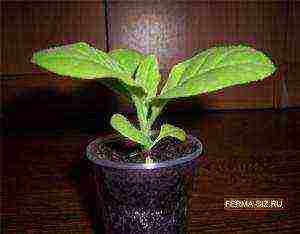 Photo: Growing tobacco for smoking
Photo: Growing tobacco for smoking
Before planting in open ground, the seedlings should be hardened a little. At first, just open the window in the room with seedlings more often, and a week before disembarking, take it out to the balcony or veranda. Do not water for a week.
Growing mode of tobacco seedlings
Tobacco is a rather thermophilic culture, so when growing, you should adhere to a certain temperature. The ideal temperature is 18-24 degrees. It should be adhered to.
Planting tobacco in open ground.
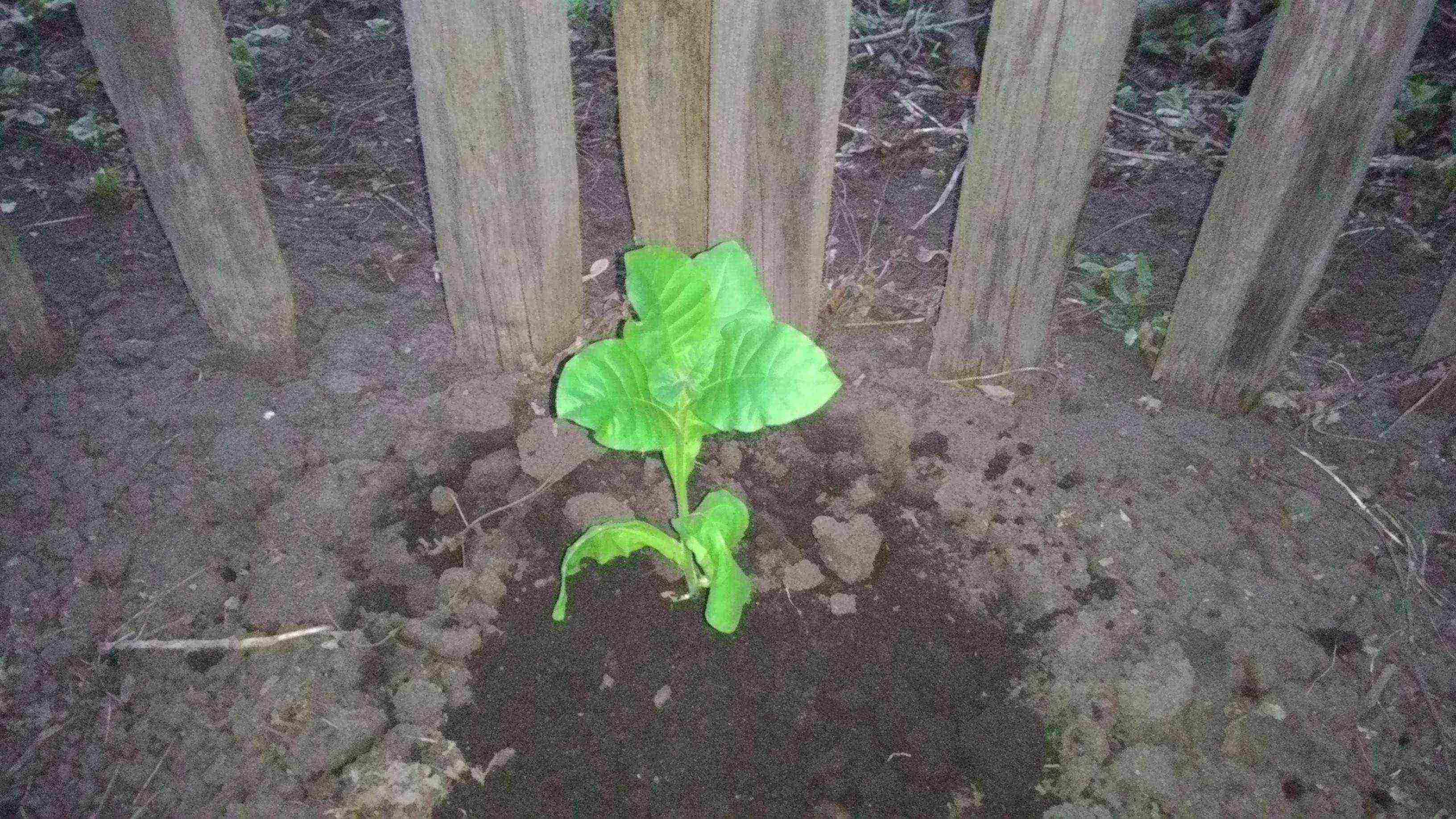 Photo: Growing tobacco from seeds in the garden for smoking
Photo: Growing tobacco from seeds in the garden for smoking
An important procedure is the planting of tobacco in the open ground.
Seedlings of tobacco are grown on windowsills until the threat of frost is completely over. Then it must be planted in a permanent place. Seedlings of tobacco are planted either under a film, or directly into open ground. When planting, it is very important to comply with all agricultural measures so that the plants begin and immediately begin active growth.
The first step is to decide on the location. It is best to make the bed on a slight slope to avoid excessive accumulation of water. Also, the place should be protected from strong winds.
If you have a small plot and it is not possible to allocate a whole garden bed for tobacco, then you can plant the plants right along the fence in one row. You will get a kind of living fence that will look very beautiful.
It is not at all necessary for tobacco to plow the soil. The site will only need to be well cleared of weeds and loosened a little with a Fokin flat cutter.
Previously, the site for tobacco needs to be fed. Rotted compost is best suited for these purposes. 0.5-1 bucket of compost is added to 1 square meter of area.
After selecting and preparing the site, you can proceed directly to planting in open ground. The tobacco is planted at a distance of 20-50 centimeters from each other, depending on the variety. You need to dig holes in the garden. They should be quite deep - 20-30 centimeters. Pour a little rotted compost at the bottom and pour it very abundantly with warm water (at least 0.5 buckets of water per hole).
Now we very carefully remove the plants from the containers, put them in the hole and cover them with earth. It is better to plant tobacco a little deeper than it grew in a glass. It is advisable to mulch the land around the plant (although this is not necessary). It remains only to pour the planted tobacco with warm water. Read more in the article: Planting tobacco in open ground.
Watering tobacco in the open field.
Watering after planting in open ground. Immediately after planting the seedlings in the open ground, tobacco is abundantly watered with warm water. Then watered about 1 time per week.
Watering, a month after planting. Plants that are most demanding on moisture become one month after planting in open ground. It is after this time that a very active formation of organic plant tissues begins. During this period, tobacco should be watered every 3-4 days at the rate of 10 liters per 1 square meter of land.
Watering 2 months after planting. From this time on, watering should be minimized. Moisture becomes less important, and the weather outside becomes more humid, especially at night. Watering should be done only if the soil is noticeably dry.
These tips are not universal, they are only general guidelines. You should always be guided by the weather conditions and the climate of your area.
Read more: Watering tobacco in the open field.
Top dressing of tobacco in the open field.
Fertilizing tobacco after planting in open ground should be done with nitrogen-containing fertilizers. Plants need a large amount of nitrogen immediately after planting to start growing a large amount of green mass, and this directly depends on the yield. It is very important not to skip this growth phase and feed them on time.
Tobacco is fed 7-10 days after planting in open ground. Any complex fertilizer with a priority nitrogen content can be used as a fertilizer. Urea is excellent for these purposes. For feeding, 1 tablespoon of fertilizer is stirred in 10 liters of water and watered at the root.
Read more in the article: Top dressing of tobacco in the open field.
Tobacco picking and punching.
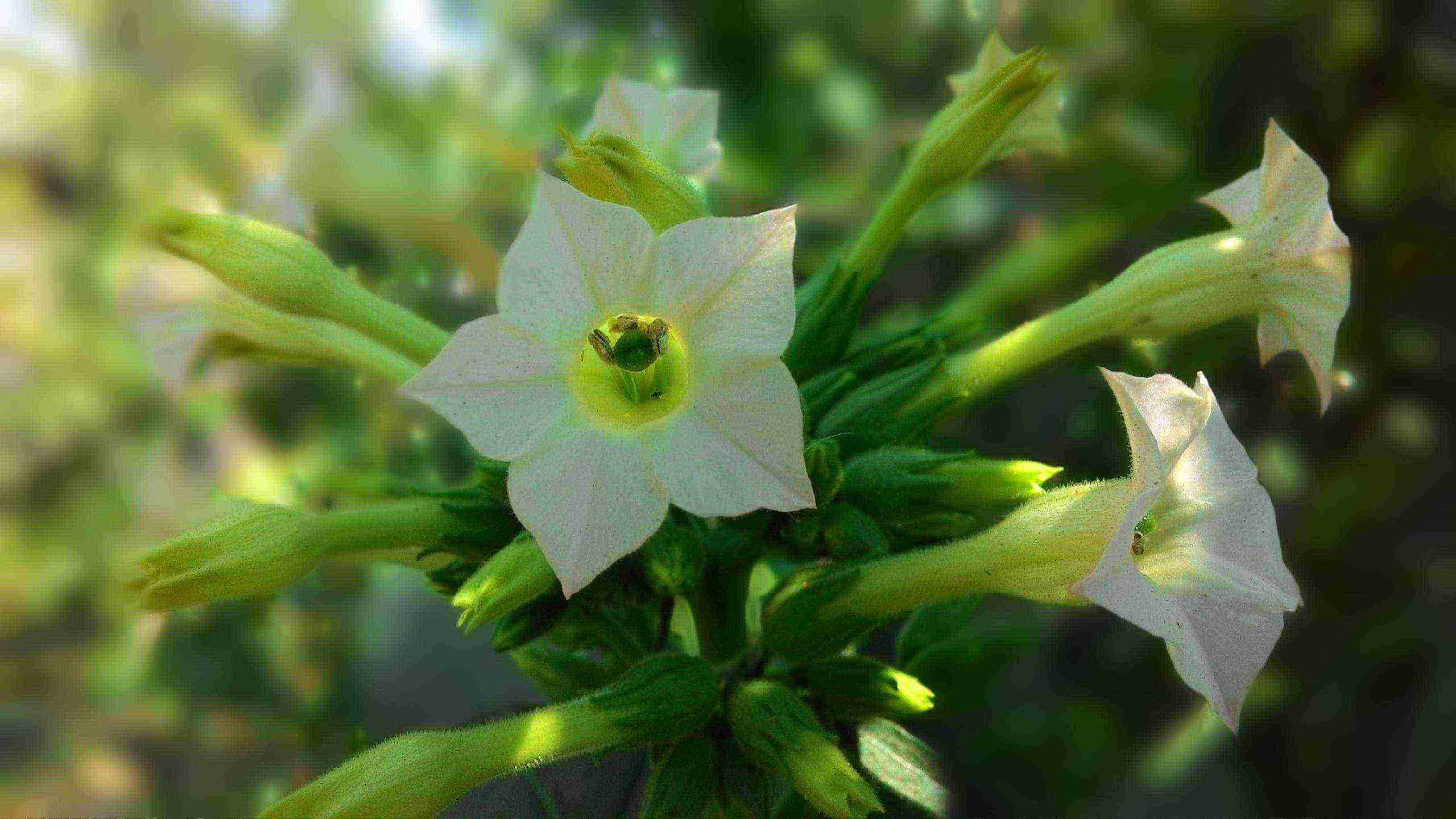 Photo: Shaping tobacco in the garden
Photo: Shaping tobacco in the garden
Stepsons grow between the leaves. As a rule, a stepson grows between each leaf. They should be removed when they grow by about 1.5-2 centimeters. If this procedure is performed earlier, then there is a high probability that they will grow again. Doing double work is unnecessary, especially if you have planted a lot of plants.
The most convenient way to remove stepchildren is with scissors.
Tobacco usually begins to let stepchildren start from the moment the flowering begins. You need to watch and not miss the moment.
Tobacco shaping is the removal of flowers at the bud stage. This procedure is also done in order to get a larger list of goods. Due to edging, tobacco leaves become much stronger, the nicotine content in them increases.
Peduncles should be removed at an early stage of budding.
Read more: Parsinking and growing tobacco.
Harvesting tobacco.
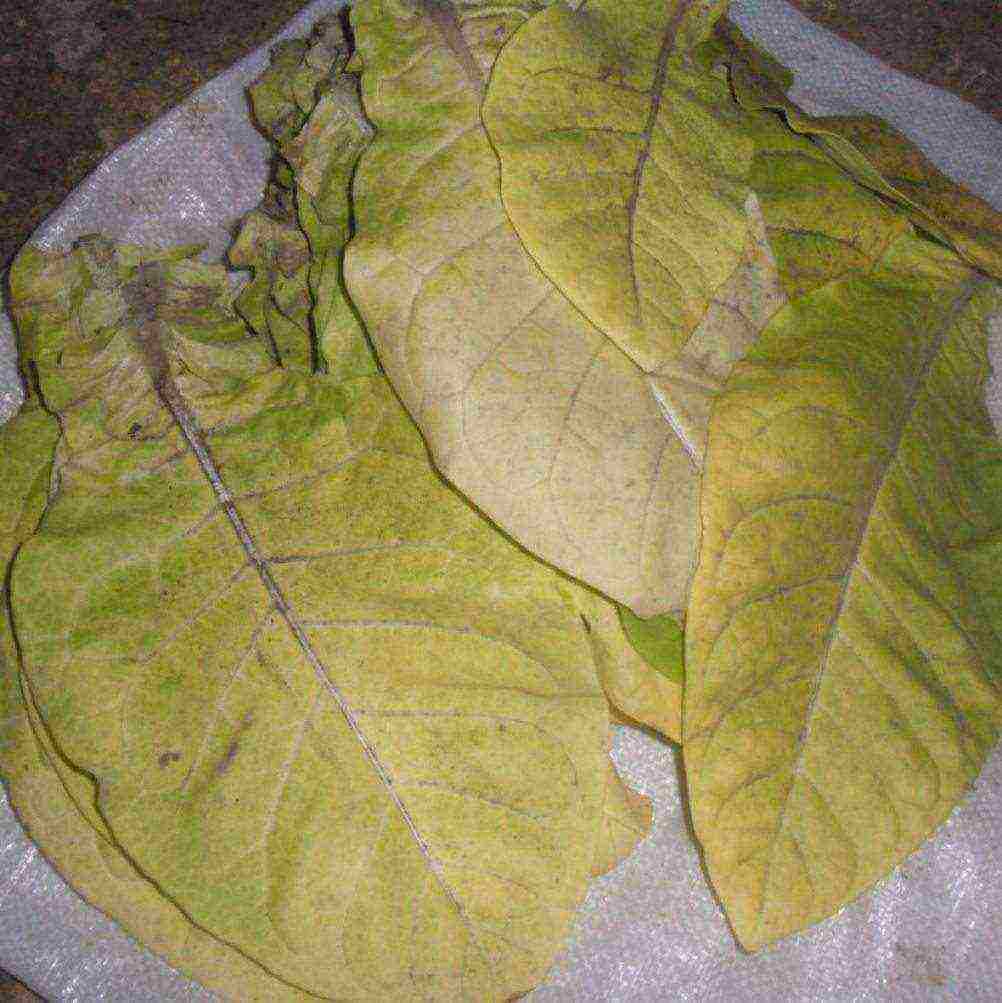 Photo: Ripe tobacco leaves
Photo: Ripe tobacco leaves
It is very easy to determine the ripeness of a tobacco leaf. The central vein turns white. The edges of the leaf turn slightly yellow, and the middle takes on a dull green color. It is very important not to miss this period and rip off the leaf, otherwise it will overripe, its quality will greatly deteriorate.
The tobacco is harvested from the bottom up as the leaves ripen.
Read more: Harvesting tobacco.
Growing tobacco in the garden for smoking is a very entertaining and exciting business. Once you've harvested and tasted it, you no longer want to buy poison in the store.
Video.
Video: Growing tobacco from A to Z. A very visual video about growing tobacco at home from seeds:
This is a whole film dedicated to the cultivation of tobacco.
Another video:
Video:
The topic is immense, read also:
